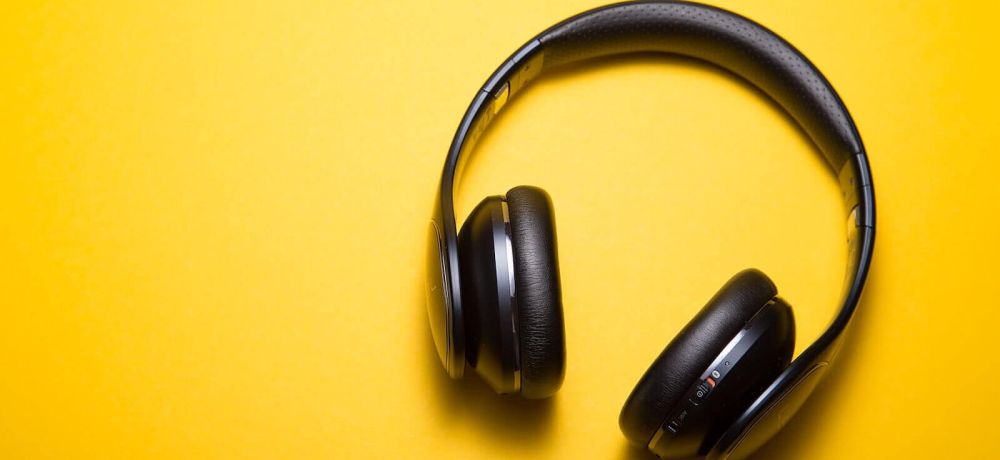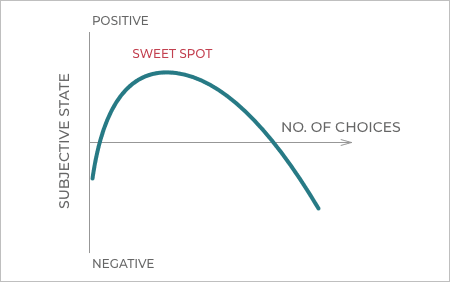
Paradox of choice: why less is more!
It’s Saturday evening and you’re planning to have a romantic date with your Netflix account. Just the two of you, no one else interrupting, enjoying a movie to the fullest. You start browsing through what Netflix has to offer. There the first option of choice arises: are you in the mood for a happy-ending love story or Brad Pitt’s Moneyball? Or maybe a movie is not at all what you’re looking for. You start looking at the endless list of series and documentaries. At some point, you get overwhelmed by the amount of choice and after 30 minutes you’re still at the point of wandering around in the Netflix catalogue. This is a perfect example of what Barry Schwartz calls the paradox of choice, the idea that more choice leads to more psychological stress and less happy feelings.
What is Paradox of Choice?
The paradox of choice is our inability to choose when presented with a lot of options, even though we like to have plenty of choices. The more to choose from, the harder the choice and the less satisfied you are with your choice. When choosing A over B, C and D, the potential loss of options (B, C and D) causes this paradox. The effect of the paradox of choice can be felt when experiencing buyer’s remorse, choosing an academic discipline or even when finding your significant other.
Back in the day, most people didn’t have much freedom in choosing their life. Especially during industrialisation we ended up mass-producing products, thereby restricting people in their choice. By now, there are so many different products that the process of choosing often takes much more time and effort, thereby reducing our freedom. This is why it’s called the Paradox of Choice, often also reffered to as the choice paradox.
Too much choice?
The paradox of choice explains that consumers experience a lot of stress because of all the choices they can make. One example of why this stress is caused is that people often begin to reconsider the trade-off of that decision in terms of missed opportunities. “Is the movie that I’m watching now giving me the satisfaction that I’m looking for? With one click, I can still switch to that other one.” This reconsideration in return will affect the amount of satisfaction we experience from the decision. From a neuromarketing perspective, the brain will not focus on what it has, but on what it does not have.
Paradox of choice and the sweet spot
Does the whole idea of a paradox mean that the best thing to do is give no choice at all? No. Schwartz discovered a so-called sweet spot in the paradox of choice. The point where the number of choices is most effective on our subjective well being. To give you an idea, here’s a visual display of the paradox of choice and the sweet spot.

Applying this knowledge to consumer choice shows that a larger assortment of products like jam, chocolate or even pension plans results in less motivation to actually buy the product. The trick is now to find that sweet-spot: where you offer not too little, but also not too much.
What about eCommerce?
It’s interesting to know whether the paradox of choice also applies to online marketing, webshops and websites. You would expect that online shopping would be able to ‘handle more options’ because of the filters you can apply. If you’re looking for a particular product you can use these filters to narrow down the enormous amount of choices that a webshop like eBay has to offer.
According to tech startup Bestmatch, this is indeed the case. They argue that reducing the number of choices you offer will have three positive outcomes for the customer:
- improving the quality of decision making
- making the process of buying a product less stressful
- more satisfaction with the decision after the purchase
Why your sales will increase by offering fewer products
This shows that for an online platform like a webshop, you need to create an environment that offers enough, but not too many options. The key here is to create filters that are easy to use. The whole idea of not too much choice is also applicable to online marketing: these need to be kept simple, logic but still informative. A website with an overload of menus and buttons will lead to more psychological distress and confusion. Too many pictures or colors will distract the brain from what really matters. Less is more is the key to success.
Paradox of Choice examples
At Neurofied we developed a free online Brain & Behavior course to teach you the ways of your audience’s brain and behavior. There, we included several examples of the paradox of choice, priming, loss aversion and lots of other fallacies. Do you want to optimize your conversion or truly understand your target audience? Be sure to check it out!
If you want to learn more about behavioral insights, read our blog or watch 100+ videos on our YouTube channel!
About Neurofied
Neurofied is a behavioral science company specialized in training, consulting, and change management. We help organizations drive evidence-based and human-centric change with insights and interventions from behavioral psychology and neuroscience. Consider us your behavioral business partner who helps you build behavioral change capabilities internally.
Since 2018, we have trained thousands of professionals and worked with over 100 management, HR, growth, and innovation teams of organizations such as Johnson & Johnson, KPMG, Deloitte, Novo Nordisk, ABN AMRO, and the Dutch government. We are also frequent speakers at universities and conferences.
Our mission is to democratize the value of behavioral science for teams and organizations. If you see any opportunities to collaborate, please contact us here.